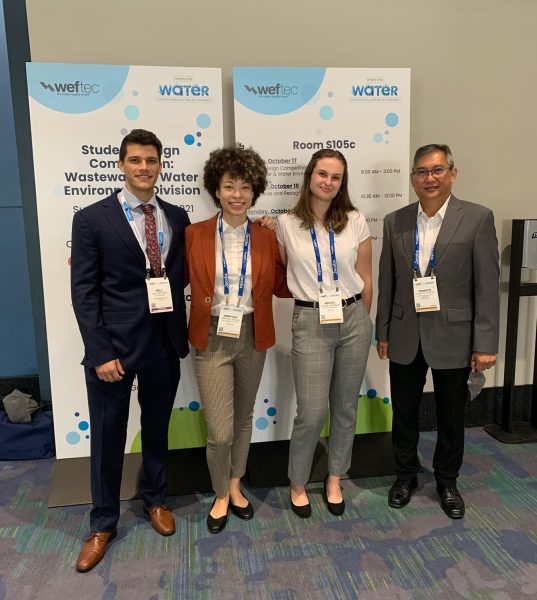
The CCEE Environmental Engineering student design team, advised by Dr. Francis de los Reyes and Dr. Michael Wang, won third place at the 20th annual Water Environment Federation Student Design Competition at the WEFTEC conference in Chicago on Oct. 17. They were among 23 teams from four countries that competed.
“I was so proud of the team — they did a lot of work to get their project done, and it showed,” de los Reyes says. “They had to learn how to communicate with their clients and stakeholders, consider how all the constraints, come up with innovative solutions, and even model the biological wastewater treatment process.”
It was the second time that the NC State design team has placed in the competition: In 2019, the group placed second in the Wastewater Design Competition.
The Wastewater Design Competition is intended to “include design projects that traditionally address a challenge within a water resource recovery facility, such as hydraulic capacity design, upgrades to existing treatment systems and biosolids handling,” according to WEF. The team, which includes CCEE students Connor Bales, Abigail Brinkman, William Brower, Syon Chand, Jackson Confer and Abbygail Kinlaw, presented their design for the Stowe Regional Water Resources and Reclamation Facility for the City of Charlotte.
The team noted that the region surrounding the City of Charlotte is one of the fastest-growing areas in North Carolina and faces increased strain on its infrastructure including its wastewater treatment capacity. The Stowe Regional Water Resource Recovery Facility is intended to supplement and replace wastewater facilities in Mecklenburg and Gaston counties. The team explored treatment options for the facility that balance leading technology with proven reliability to produce a sustainable design. With the City of Charlotte’s input, a membrane bioreactor (MBR) with an anaerobic/ anoxic/aerobic process (A2O) was chosen, based on nutrient removal performance, environmental footprint and innovation.
